Today was Eric’s big day–he was scheduled to do a presentation and be part of a panel. He left the hotel extra early this morning to meet with the other panel members to do a run through before the conference started. Sadly, Eric’s session was the very last of the entire conference, so it didn’t have great turn out. But, the session itself went well overall. He was done in the mid-afternoon and went to lunch with some co-workers before driving back to Nice.
Christi left the hotel around 1000 and caught the 217 bus to Nice. This time, she went three stops farther before exiting the bus, which dropped off even deeper into the historic district than she had gone yesterday. She followed the windy roads up the hill until she arrived at the Lou Casteu park’s gate. In the hilly area, the buildings looked even older than in the flatter parts she had visited the other day. This is a shot of the streets of old town from the gate.
From what Christi can tell from the spotted history she has read, the Nice area has been inhabited for 400,000 years. The Celtic Ligurians built a fortress on this hill probably back around 1500 – 500 BC. The fortress was conquered by the Greeks around 350 BC and they built the town of Nikaia along the hill underneath the fortress. Nikaia became a flourishing trading port and was eventually conquered by Rome. When Rome collapsed, Nikaia/Nice became part of an assortment of feudal states. Eventually, Nice was permanently acquired by France.
It sounds like the top of this hill was continually a fortress and/or castle until French King Louis XIV ordered the fortress and castle to be razed in 1706. They were never rebuilt, and the site was eventually converted into a park.
From the park’s gate, she followed a road farther up the hill. Once upon a time, she would have mistaken the stone wall built along the mountainside for an elaborate retaining wall, but we’ve seen enough castles and fortresses now to know the difference between fortress walls and retaining walls. Fortress walls have tiny, evenly spaced holes eye level. The holes were installed so that soldiers could watch for enemies and shoot at them from tunnels on the other side of the walls.
The road led to a large church, a couple of cemeteries, and a parking lot. There were several walking trails to choose from that all led up. She followed one. It looked like it may have been the original footpaths from the fortress. The trail meandered up for a lot longer than she would have expected, at times becoming steep, sometimes so steep that it turned into a staircase for a short way.
Between the trees, there were glimpses of the ocean and city below. Along the way, here and there were signs pointing out various ruins. This is a Roman sign. Sadly, the picture is probably too small for you to see what it says.
She also passed a man made waterfall, but it was dry. Eventually she made it to the top. There was a large park, with a soccer field, children’s playground, and a shaded area with benches.
There was also a small area with some ancient Roman ruins and a couple of cafes.
The sidewalks were inlaid with mosaics. She wondered if they were original from the Roman era or if they were reproductions of what the walkways around the castle once looked like.
On the way up, she had only been able to see one side of the city, from the top, there were 360 degree spectacular views.
As she was getting ready to head back down, there was a loud explosion; it sounded like cannon fire. She jumped and looked around. No one else seemed fazed. Then she heard sirens. But still, no one seemed fazed. She headed down via a different path than she took up.
There were several more interesting sites on the way down: The Devil’s Well, built in the early 16th century, that went down 85 yards to supply fresh water to the hill top. At the time, it was a remarkable work.
A cool looking old tower with lots of plants growing on the wall:
And the Tour Bellanda, built in 1826 in the precise location of another tower, St. Elme, that was razed in 1706.
To be continued tomorrow…

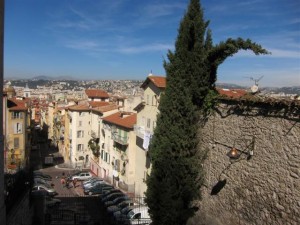
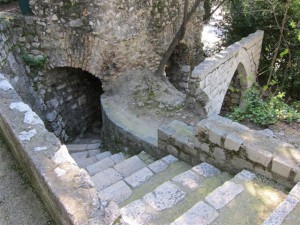
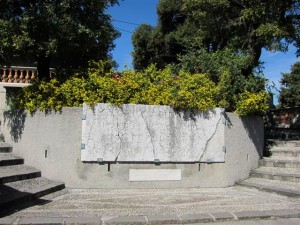
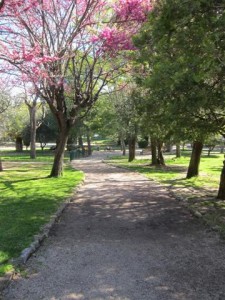
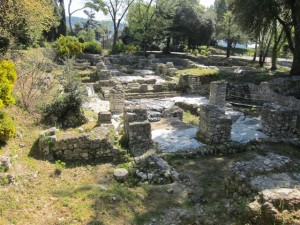
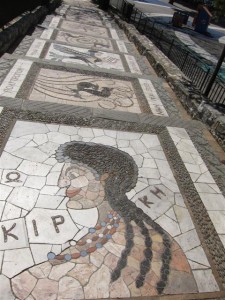
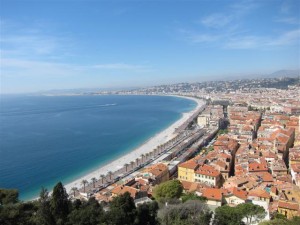
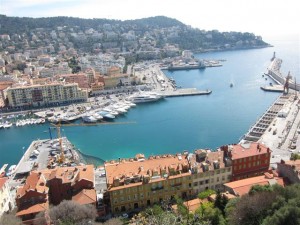
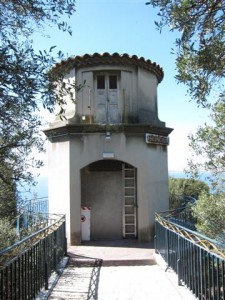
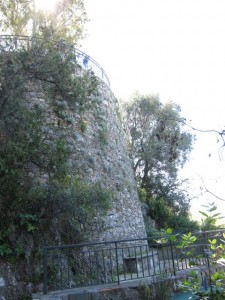
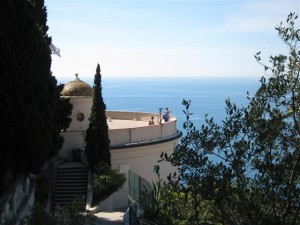
Can I be the first to second(!) Kent’s comment of April 12? Yes; fabulous to see you writing again Christi. You have a rare gift for making the reader feel as if he is actually there with you. Although I am more “into” boat stuff rather than” travelogue” stuff (and you know why!), your talent really shines when off the boat. I still feel a shiver when I recall your description of your visit to Paris. Truly, a magical gift.
I wish Carole and I still lived just outside Nice as we would have insisited on you staying with us (I’m due you and Eric about 28 days if you recall!) and we would have have had some fun.
Eric getting lost reminded me of just how difficult it is to navigate around Nice airport, and your description of bus rides evokes memories as well! The ony saving grace about the bus is that all journies are 1 Euro, even if you split your journey and get on again!
Food prices in Cannes; yes, best avoided! The siren/cannon at the castle is (I think) a civil defence drill on the first Wednesday of the month.
Anyway, I’ll sign off now with a glass of french wine in my hand with much love to you both,
Colin
Colin, we really wish you were still living in Nice. We would have loved to see you and Carol.
We have so much to write about with regard to Kosmos. We’ve done a bunch of work to her and got a new drawer freezer that runs on both AC and DC that is super cool. However, I need Eric’s help to write the technical stuff and he just doesn’t have the time to help me. He is working like crazy.